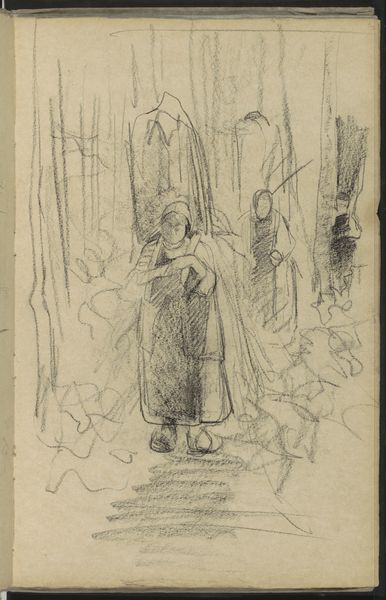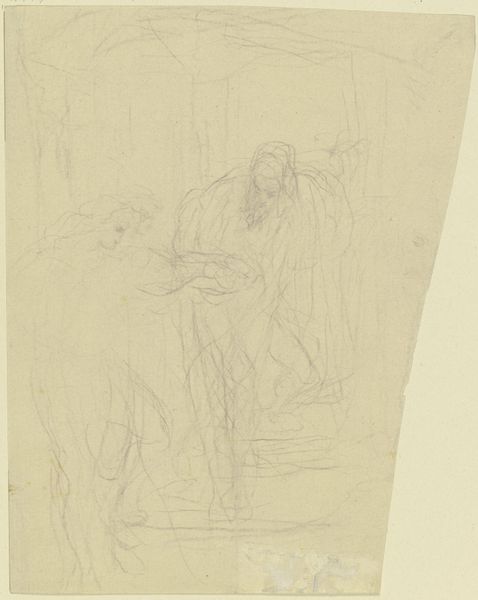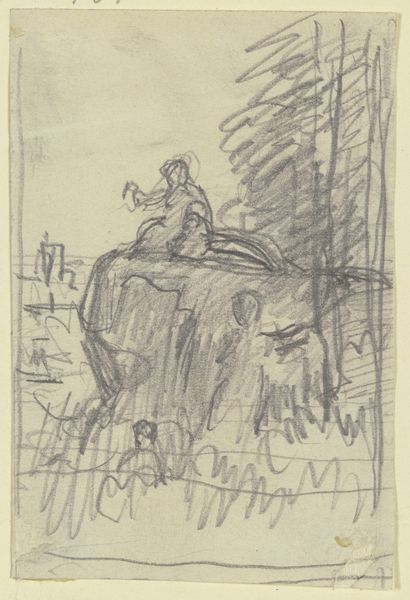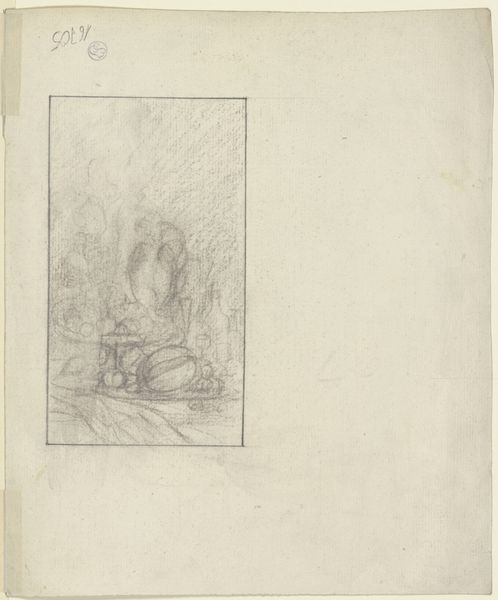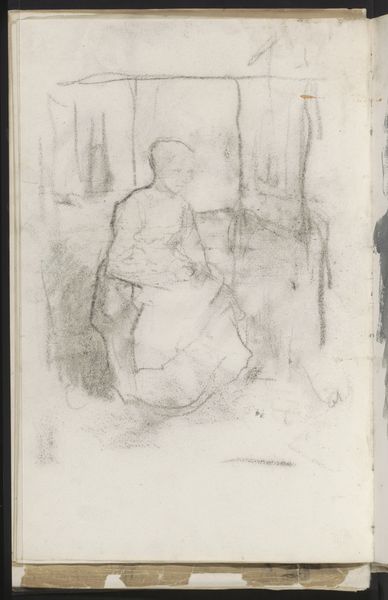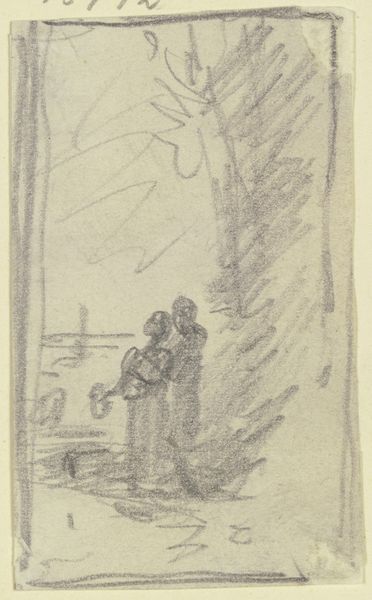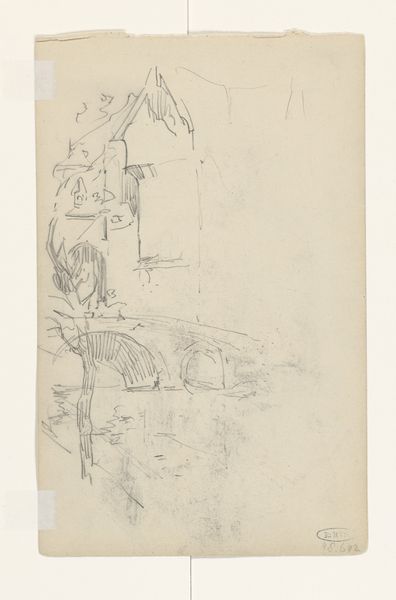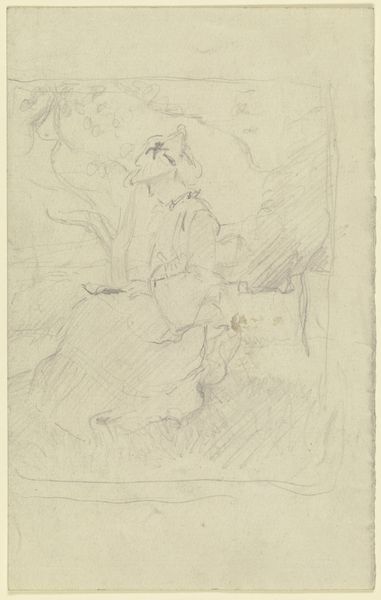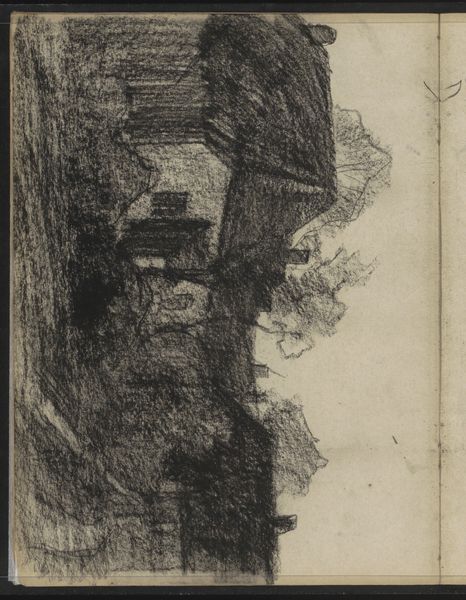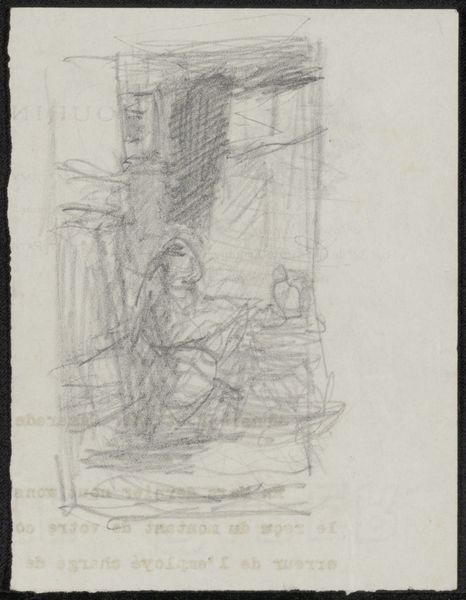
drawing, paper, pencil
#
portrait
#
drawing
#
16_19th-century
#
quirky sketch
#
impressionism
#
pencil sketch
#
landscape
#
paper
#
sketch
#
pencil
Copyright: Public Domain
Curator: Before us, we have Otto Scholderer's pencil drawing titled "Frau, an einem Baum stehend", which translates to "Woman Standing by a Tree." It resides here at the Städel Museum. What's your first take? Editor: There's something ethereal about this sketch, a dreamlike quality in the barely-there lines. It feels unfinished, intimate. It also strikes me as being a quiet resistance against more formal, structured portraits of women in that era. Curator: Precisely. The informality challenges the traditional portraiture conventions. Looking closely, you'll notice the deliberate placement of the figure – the woman is not central, she’s to the side, almost merging with the trees, questioning dominant narratives around female visibility and representation. Editor: It really draws attention to the way women were relegated to the margins, both literally in the composition and figuratively in societal power structures. The tree feels almost protective, sheltering her from a direct gaze. I wonder, too, about the lack of detail, making her less of an individual and perhaps more of a symbol. Curator: I think that's insightful. This pencil drawing embodies the artistic movements that challenged rigid academic norms, shifting the focus towards capturing fleeting moments and subjective experiences, democratizing both the artmaking and viewing experiences. This allows for viewers like you to have subjective takes of Scholderer’s intentions. Editor: That freedom of interpretation is important, especially when we talk about works depicting marginalized figures. Are we viewing a candid depiction or an artistic statement reflecting women and nature’s roles, reinforcing or resisting those roles? That ambiguity makes it compelling. Curator: It's that dialogue that makes art relevant. And what better role for museums and their collections? We make room for this sort of reading of what are presumed traditional or classical portrayals of femininity in relationship to nature. It certainly is food for thought. Editor: Absolutely. Thank you for guiding my reflection today. Curator: My pleasure. I look forward to continuing these dialogues that make for more robust and complex approaches to historical understanding.
Comments
No comments
Be the first to comment and join the conversation on the ultimate creative platform.
